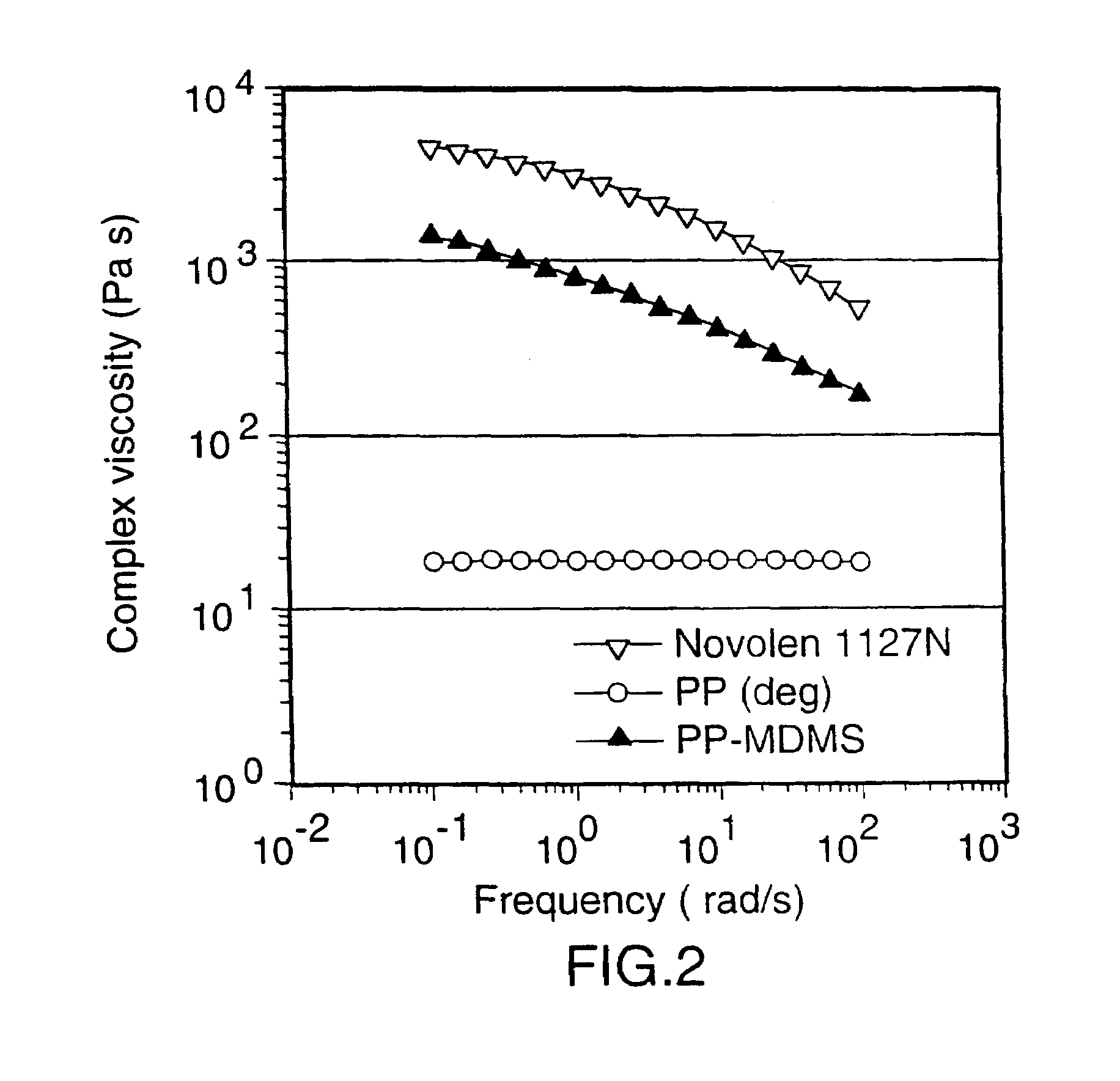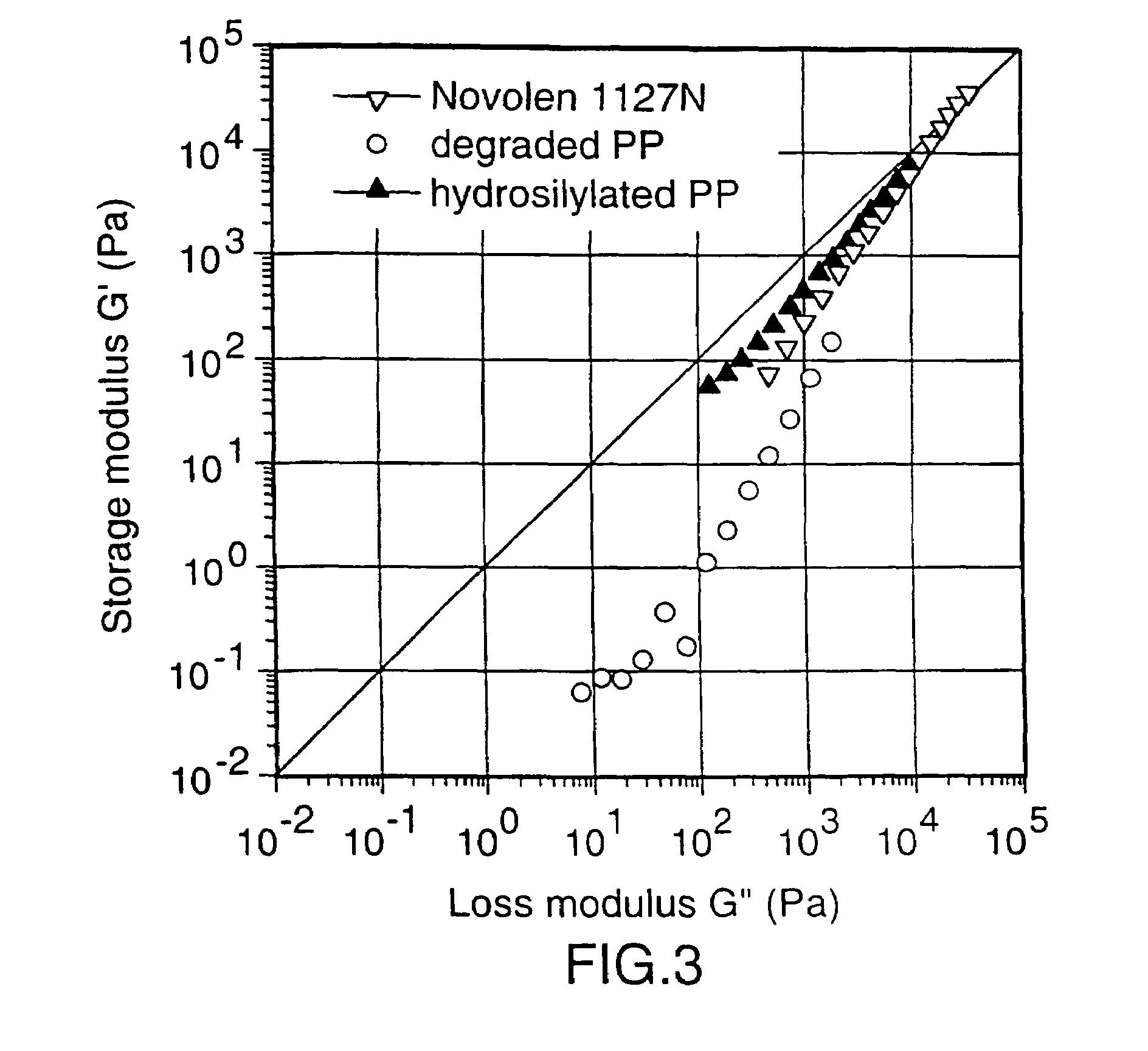Melt phase hydrosilylation of polypropylene
a polypropylene and melt phase technology, applied in the direction of transportation and packaging, chemical/physical/physico-chemical processes, layered products, etc., can solve the problem of reducing the mechanical properties of the material
- Summary
- Abstract
- Description
- Claims
- Application Information
AI Technical Summary
Benefits of technology
Problems solved by technology
Method used
Image
Examples
example 1
[0045]This Example describes the formation of the reactive MDMS / Pt solution used to hydrosilylate polypropylene.
[0046]9 g of toluene were added to 6 g of a MDMS (HMS 301—Gelest. Corp. molecular mass 2000. 40 μL platinum catalyst and 200 μL cumene hydroperoxide next were added under vigorous stirring of the solution. After the gas formation stopped, the solution was blanketed with argon and stored in the refrigerator.
example 2
[0047]This Example describes the degradation of the polypropylene which is used for the melt phase hydrosilylation.
[0048]3 kg PP (Novolen 1127 N-BASF, Mwt. were masterbatched with 0.5 wt % of DHBP (dihydro-butylperoxide—Peroxide Chemie) in a 5 L powder bottle. The masterbatch was loaded into a hopper and fed to a twin screw extruder (ZSK 30. Werner and Pfleiderer). The reaction temperature was 220° C. The extruder screw speed was 200 RPM and the product was extruded through a 4 mm die and was pelletized after cooling in a water bath.
example 3
[0049]This Example describes the formation of branched PP-MDMS copolymers in a Brabender-Mixer.
[0050]35 g granules of PP (deg) were mixed with 5 g of powdered PP (deg). 4 g of the solution described in sample 1 were added to the PP (deg). The masterbatch was fed to a brabender mixer at 180° C. and kneaded with 80 RPM. The torque of the brabender was followed on-line.
[0051]After 60 min. the reaction was stopped and the product was recovered.
PUM
| Property | Measurement | Unit |
|---|---|---|
| temperatures | aaaaa | aaaaa |
| temperature | aaaaa | aaaaa |
| metallic | aaaaa | aaaaa |
Abstract
Description
Claims
Application Information
 Login to View More
Login to View More - R&D
- Intellectual Property
- Life Sciences
- Materials
- Tech Scout
- Unparalleled Data Quality
- Higher Quality Content
- 60% Fewer Hallucinations
Browse by: Latest US Patents, China's latest patents, Technical Efficacy Thesaurus, Application Domain, Technology Topic, Popular Technical Reports.
© 2025 PatSnap. All rights reserved.Legal|Privacy policy|Modern Slavery Act Transparency Statement|Sitemap|About US| Contact US: help@patsnap.com



